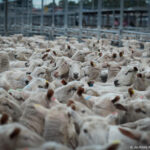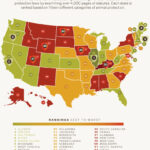The landscape of animal welfare laws in the United States has been evolving significantly over the past few decades. As we approach 2025, a critical examination of what will legally be considered animal cruelty is essential. The increasing awareness of animal rights, coupled with the science behind animal sentience, is reshaping the legal frameworks designed to protect non-human species. This discussion delves into the anticipated legal definitions of animal cruelty, the socio-cultural evolution contributing to these changes, and a broader reflection on humanity’s relationship with animals.
Historically, animal cruelty has been characterized primarily by overt acts of violence and neglect. However, in 2025, the scope of what constitutes cruelty is expected to transcend the traditional boundaries of physical abuse, expanding towards more nuanced forms of maltreatment. For instance, the psychological well-being of animals is gaining recognition, and laws may encompass emotional and psychological harm—an area often overlooked in prior legislation. This shift acknowledges that animals, much like humans, can experience distress and suffering beyond merely physical pain.
Examples of anticipated legal definitions include the prohibition of confinement in excessively small spaces that hinder an animal’s natural behaviors. Current regulations in many states still allow for certain forms of agricultural confinement, a practice condemned by many welfare advocates. The “puppy mills” and intensive farming operations that prioritize profit over the well-being of animals are likely to face stricter scrutiny. Legislative efforts could codify broader definitions of adequate living conditions, promoting environmental enrichment and social interactions that mimic natural settings.
In addition to physical conditions, we can predict that acts that exploit animals for entertainment will face more severe condemnation. For decades, circuses and aquariums faced criticism for their treatment of animals regarding confinement and performance coercion. Laws are trending toward criminalizing acts that subject animals to inhumane training and performance conditions, as society increasingly recognizes the ethical implications of using sentient beings for amusement. Public sentiment, fortified by documentaries and advocacy campaigns, is likely to galvanize lawmakers into action, leading to tighter regulatory frameworks.
As we analyze these emerging shifts in the definition of animal cruelty, it becomes crucial to consider the role of societal values in shaping legislation. In contemporary discourse, there is a growing recognition that our treatment of animals reflects our moral compass. The discomfort many feel when witnessing instances of violence against pets or strays highlights an ingrained empathy towards animals. This intrinsic connection fuels the demand for reform. The rising popularity of veganism, coupled with a resurgence of interest in animal rights movements, may trigger an acceleration of legal reforms by 2025, as constituents call for change.
Moreover, technological advancements present unique challenges in the realm of animal protection. With the rise of artificial intelligence and biotechnology, the ethics surrounding animal testing and genetic modification will likely evolve. Issues regarding the welfare of animals used in laboratory settings could lead to tighter regulations that limit the use of animals in experiments that display potential for pain or distress. Society’s increasing unease about corporate practices that disregard animal welfare may catalyze policies that require more humane testing alternatives.
As these considerations unfold, one must not overlook the significance of transparency in industries heavily reliant upon animal labor. The push for clearer labeling regarding animal products could facilitate informed consumer choices, contributing to a marketplace that values ethical sourcing over mere profit. This trend would not only empower consumers but also compel producers to adhere to stricter humane standards to maintain market viability. By 2025, we could witness an era where transparency becomes a legal backbone in animal agriculture, forcing compliance from producers who wish to thrive in a socially conscious economy.
However, as we project these future legal definitions and standards, one must grapple with the inherent complexities of enforcement. Laws are only as potent as their enforcement, and the disparities in resources available to various jurisdictions can create an uneven landscape for animal protection. It is imperative that as laws evolve, so too does the infrastructure to enforce them. Training law enforcement and animal control officers to recognize signs of psychological distress and the various facets of cruelty will be integral in implementing the anticipated regulations effectively.
Throughout the evolution of animal cruelty legislation, an underlying sentiment persists—our treatment of animals often reflects our humanity. By 2025, it is crucial that our legal definitions encompass a broader understanding of animal welfare, addressing not just the physical, but also the emotional and psychological dimensions of cruelty. As we navigate these changes, society must remain vigilant, continuing to advocate for those who cannot voice their suffering. The era we enter is not merely about reframing laws; it signifies a step towards a more compassionate coexistence with the creatures that share our world.
In conclusion, as we look towards 2025, our collective journey in redefining animal cruelty is more than an update of legal terminology. It is a profound acknowledgment of the evolving societal values that push us towards a more humane treatment of animals. The impending changes epitomize a pivotal moment in history, where our moral obligations and empathetic capacities converge to forge a legal landscape that, with any luck, will reflect our highest aspirations for a compassionate world. The commitment to preserving animal welfare will not only reshape the legislation but also redefine what it means to be stewards of this planet.







